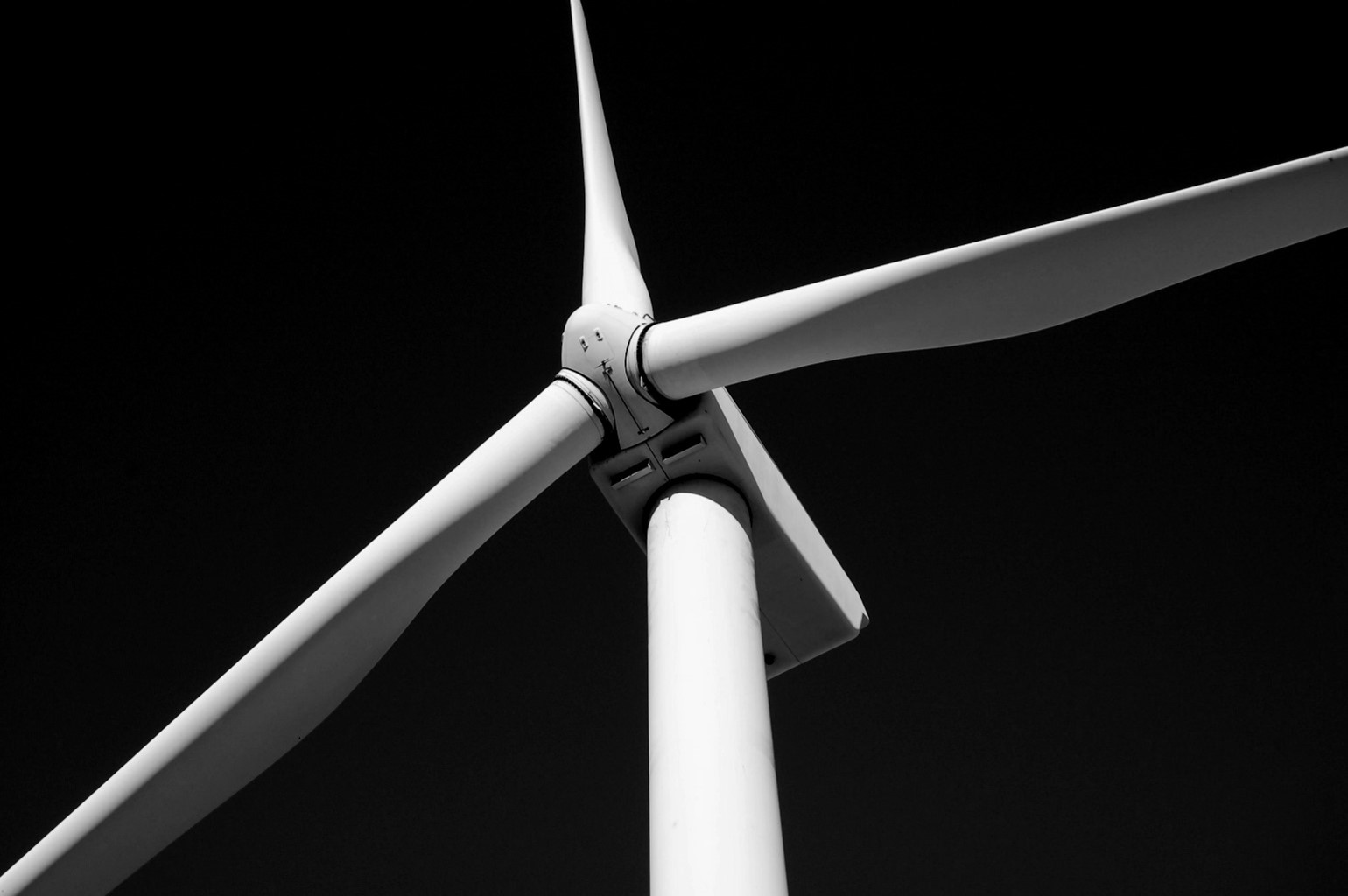An interview with Professor Pierre Pinson, Chair of Data-Centric Design Engineering at Imperial’s Dyson School of Design Engineering
Pierre Pinson has always been interested in the wind. As a child, he wanted to be a weather forecaster. He was fascinated by boating: how does a sail catch an invisible current, and turn it into forward motion? He would go on to study in the Netherlands and in Denmark, drawn to the wind turbines of the North Sea. ‘At the time, Denmark was the most exciting country to do research with wind energy,’ Pierre explains. ‘They had some of the first offshore wind farms’.
His career has led him to some of the biggest challenges of our time, blending engineering and policy: climate change, the energy transition, artificial intelligence, and forecasting. But above all, Pierre talks about helping people. ‘The big issue with the energy transition is that we’ve been so focused on technology,’ he says. ‘But if people aren’t on board, it’s not happening’. He emphasises the need to bring people and technology together. ‘That’s why I’m here at Imperial’s Dyson School of Design Engineering, where we aim to be more multidisciplinary – to think of humanity and technology hand in hand’. Imperial’s new Schools of Convergence Science have been designed for exactly that purpose: to unite practitioners, policymakers, and academics from a wide range of disciplines.
Pierre’s current focus is the future of the electricity market. ‘The UK system has changed completely,’ he explains. We used to get our electricity from a small number of power stations, run by an even smaller number of companies. Today the market is much more decentralised. In principle, anyone can install their own heat pump or solar panel, and generate their own electricity. ‘Think about it,’ Pierre says, ‘if nearly all of our power comes from wind and solar, then energy can be seen as a public good, right? It comes from the weather. Nobody owns it.’
For policymakers, this poses a challenge. How do you make the system fair for people who can’t afford to install solar panels, or who don’t have a suitable roof? How do you stop the grid being overloaded at peak times? And what’s a fair price for electricity, when supply and demand suddenly become much more difficult to predict? Decentralisation, after all, is a shift from the known to the unknown – a transition from easily-monitored control panels displaying exactly how much electricity we have available, to a market governed by two of the least predictable things in life: human behaviour, and the weather.
This is where data analytics and forecasting come in. ‘In the future, the most valuable thing will be data,’ he explains. This is a change some parts of the UK market have yet to grapple with. ‘Most energy companies will have to completely reinvent themselves and their business models,’ he says. ‘When people think about stakeholders in the future power system, they should think about data and tech companies like Google and Microsoft, not necessarily Shell and BP. People say, that’s ridiculous – you can’t tell me that the information I collect from my smart meter will be more valuable than the power I am consuming. But when anyone can produce and trade their own electricity, the whole market becomes a complex game of prediction.’
In this field, Pierre has a small taste of his childhood dream – only instead of forecasting tomorrow’s weather, he’s predicting its effects. ‘For some time, we’ve been looking at this idea of community-based and peer-to-peer energy markets,’ he says. ‘Imagine a marketplace where, instead of buying energy from EDF or Octopus or any other big retailer, you can produce your own electricity and trade it directly with your friends and neighbours.’ Someone generating solar energy in the UK currently has few options to do this. Depending on where they live, they might be able to sell their excess energy to a community microgrid through an intermediary, or perhaps their local council.
Other countries are more experimental. Australia, where solar power is abundant, has platforms where people can trade electricity directly with each other. You simply log onto a website, where your transaction is processed via blockchain – recorded on a decentralised, virtual ledger – so the seller gets paid instantly without a middleman. A mix of schemes are currently being tested. Some models are purely altruistic, for sharing electricity among neighbours. Others are for profit.
The UK is slowly catching up to this idea. In 2018, Centrica announced it would be trialling a peer-to-peer energy market in Cornwall. Last year, Ofgem granted a supply licence to UrbanChain, a Manchester-based start-up which encourages users to ‘build your own energy market’. And a government consultation – the Review of Electricity Market Arrangements, or REMA – might soon prompt further change as policymakers consider how the system can support Labour’s net zero objectives.

‘One of the biggest issues we have is there’s a lot of cool ideas,’ says Pierre, ‘but it’s difficult to take the next step’. Often the blocking point is regulation. One solution is to have more exploratory sandboxes, where researchers and entrepreneurs can test an idea in a safe, confined environment – perhaps a pilot scheme in a city, or a single region – without the level of oversight you would typically need to launch a consumer product. Pierre points to artificial intelligence and tax policy, in particular, as fields in which future sandbox experiments could prove useful. AI will not be adopted if it is not proven to be trustworthy and explainable. And on tax, no one would want to completely change tax and network charges for the whole UK at once, without having a clear view of the effects of such an experiment. ‘If we want to make a change for real, we’ll have to try these things in the real world’.
Speed is also a big factor. ‘We need to find ways to shorten the amount of time it takes to turn an idea into a practical trial,’ he urges. ‘Especially an idea that looks a bit crazy or disruptive.’ If you look at the R&D cycle today, Pierre explains, ‘it takes time to get research funding, then to get an innovation off the ground, then to scale it up, then to try to convince people that it works,’ Pierre says. ‘All told it may take up to 10 to 15 years to get an idea into the real world.’ He notes that this is another strength of Imperial: ‘as a university, we are extremely ambitious. We want to make an impact on the world. The ideal scenario would be to tweak our regulatory framework to allow things to go faster, while upholding ethical standards, and ensuring all stakeholders are on board.’
Will all this get us closer to net zero? Pierre is hopeful, but realistic: ‘for a few countries, I would say yes – for instance, there’s a lot going on in the UK, Denmark, Portugal… you can make a small list of places. The problem is that, even if these countries reach net zero, they still represent only four or five percent of emissions globally. At Imperial we want to work with a lot of countries – in Africa, in Southeast Asia, with India and China. We have to collaborate with the rest of the world. They are not at the same starting point, and have different challenges and views on how to reach net zero.’
Are politicians paying attention? ‘I think it’s a matter of trust, and understanding each other,’ says Pierre. ‘Every government has a finite budget and finite resources to allocate. They receive so many requests from all parts of society, and they are forced to find compromises. In general, I think it’s difficult to foresee the scale of investment in the grid and energy infrastructure that have to be made, as well as the related social changes.’
The future is always uncertain. But one thing is clear: the only way we’re going to find a way through is by bringing people together. Policymakers, practitioners, researchers. This is Imperial’s mission. The new Schools of Convergence Science are truly multidisciplinary – Pierre’s work spans engineering, applied mathematics, economics, and the social sciences. Working as one, we can at last predict which way the wind will blow.
